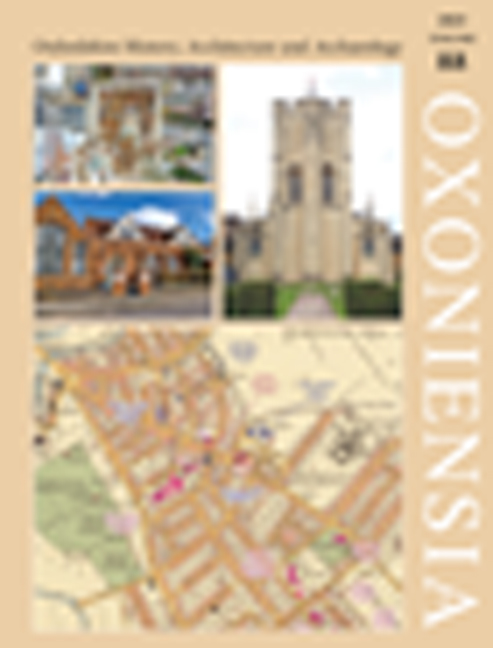Religious Rivalry in Victorian Cowley St John and its Legacy
Published online by Cambridge University Press: 15 May 2024
Summary
SUMMARY
This article examines the religious life of the suburban Oxford parish of Cowley St John in the second half of the nineteenth century. It contrasts the ministry of a well-resourced and visionary Anglican vicar with a Nonconformist mission supported largely by ordinary people of the ‘middling sort’ who were determined that their beliefs should be promoted too. The Nonconformist mission left few lasting traces but this study reveals a more competitive Victorian religious world in Oxford than may be supposed from a superficial comparison of written or architectural legacies.
Christianity was easily the dominant faith of Victorian Britain but it was also ‘much more disunited and quarrelsome than it is now’. One important strand of Victorian Christian faith was represented by the Evangelicals. Ripples from the Evangelical revival of the eighteenth century had spread over into the 1800s: existing denominations were reinvigorated and new ones were born. Those holding to Evangelical theology could be found within the Church of England as well as many Dissenting or Nonconformist groups, including Baptists, Independents, Methodists and Congregationalists, who all agreed about the doctrines of the Trinity, the inspiration and authority of Scripture, human sinfulness and the justification of sinners by faith through the agency of the Holy Spirit, amongst other doctrines. The proportion of churchgoers who joined Dissenting congregations increased from about 10 per cent in 1790 to almost 50 per cent by 1851. Often, different Evangelical groups could overcome their differences and work together, as will be illustrated later.
The Tractarians represented a very different tradition. In the 1830s, the Oxford Movement burst onto the religious scene via a series of tracts on theological matters written by Oxford University academics, including John Henry Newman, Edward Bouverie Pusey and John Keble. Tractarians endeavoured to restore the Catholic heritage of the Anglican Church, asserting that the nineteenth -century Anglican Church was still, essentially, Catholic. As the century progressed, followers of the Oxford Movement often adopted more elaborate ceremonial ritual. Such ostentatious harking back to medieval Catholicism provoked the ire of many Protestants, especially when it coincided with the re-establishment of the Roman Catholic hierarchy in England and Wales (in 1850).
The Tractarian ministry differed greatly, and very visibly, from that of the Evangelicals. The Tractarians worked towards building a Eucharistic community, whilst the Evangelicals sought to build God’s kingdom soul by soul.
- Type
- Chapter
- Information
- Oxoniensia , pp. 49 - 72Publisher: Boydell & BrewerFirst published in: 2024

